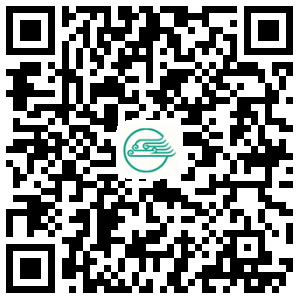The Fundamentals of Chinese Medicine is an international collaboration of Chinese medicine experts from both China and the west, and co-written by an experienced practitioner who has been teaching the subject in western schools. This book covers the theory of traditional Chinese medicine and discusses the topic in greater depth than any English language textbook available today. An abundance of classical references are also included here. The material in this text comprises course material for a professional course of training in TCM, which is also the basic material for studying and comprehension of other more advanced courses in TCM. The main contents include the physiological basis of essence-qi, yin-yang and the five phases, followed by the theories of essence, qi and blood, fluids, and spirit. Organ manifestation, channel and collateral theory, constitutional theory, etiology and patho-mechanism, and also principles of prevention and treatment are expounded upon. The knowledge in this textbook is approximately equal to that for students of TCM colleges in China, and coincides with the requirements in the Examination Syllabus for TCM Professional Practitioners Worldwide.
Introduction
Fundamentals oF Chinese mediCine
organs, Qi, Yin and Yang, Five Phases and Channels and Collaterals
signs and sYmPtoms, diseases and Pattern diFFerentiation
Chapter 1 The Fundamental Philosophy of Chinese Medicine
Section 1 Theory of Essence-Qi (Jīng Qì Xué Shuō, 精气学说)
Section 2 Yin and Yang Theory (Yīn Yáng Xué Shuō, 阴阳学说)
Section 3 Five-Phase Theory (Wŭ Xíng Xué Shuō,五行学说)
Chapter 2 Essence, Qi, Blood, Fluids and Spirit
Introduction
Section 1 Human Essence
Section 2 Qi
Section 3 Blood (Xuè, 血)
Section 4 Fluids (Jīn Yè, 津液)
Section 5 Interrelationships of Essence, Qi, Blood, Fluids
Section 6 Spirit (Shén, 神)
Chapter 3 Organ Manifestation (Zàng Xiàng, 藏象)
introduction to tHe organs
cHaracteristics oF tHe Five Zang-organs, tHe six Fuorgans, and tHe extraordinary Fu-organs
organ-essence, -Qi, -yin and -yang
Section 1 Five Zang-Organs (and Pericardium) (Wŭ Zàng, 五脏)
Section 2 Six Fu-Organs (Liù Fŭ, 六腑)
Section 3 Extraordinary Fu-Organs (Qí Héng Zhī Fŭ, 奇恒之腑)
Section 4 Relationships among Organs and Substances
Chapter 4 Etiology and Pathogenic Factors
Introduction
Section 1 Six External Pathogenic Factors (Liù Yín, 六淫)
Section 2 Epidemic Qi (Lì Qì, 疠气)
Section 3 Damage from the Seven Emotions (Qī Qíng Nèi Shāng, 七情内伤)
Section 4 Improper Diet (Yĭn Shí Shī Yí, 饮食失宜)
Section 5 Imbalanced Periods of Work and Rest (Láo Yì Shī Dù, 劳逸失度)
Section 6 Pathological Products
Section 7 Miscellaneous Pathogenic Factors
Chapter 5 The Onset and Transmission of Disease
Section 1 Attack of Disease
Section 2 Disease Transmission
Chapter 6 Pathomechanisms
Section 1 Basic Pathomechanism
Section 2 Eight Principles of Pathomechanisms (Bā Gāng, 八纲)
Chapter 7 Constitutional Theory
Section 1 General Concepts of Constitutional Theory
Section 2 Classifications of Constitutional Types
Section 3 Applications of Constitutional Theory
Chapter 8 Prevention, Principles and Methods of Treatment
Section 1 Prevention of Disease
Section 2 Therapeutic Principles & Methods of Treatment
Chapter 9 Diagnosis
disease and Pattern
eight PrinciPles
Four Pillars
ten Questions1
chieF comPlaint
Chapter 10 Channel and Collateral Theory
Introduction
Section 1 Channels and Collaterals
Section 2 Twelve Channels
Section 3 Eight Extraordinary Vessels
Section 4 Miscellaneous Points
Section 6 Additional Systems of Acupuncture
Chapter 11 The History of Chinese Medical Theory
spring-auTumn period (722-476 bCe)
warring sTaTes and The han dynasTy (202-195 bCe)
wei, Jin, sui, and Tang dynasTies (ad 265-907)
song, Jin and yuan dynasTies (ad 960-1230)
ming and Qing dynasTies (ad 1368-1911)
modern China
modern Times
Chinese mediCine ouTside of China



 扫描下载客户端
扫描下载客户端









 联系我们
联系我们